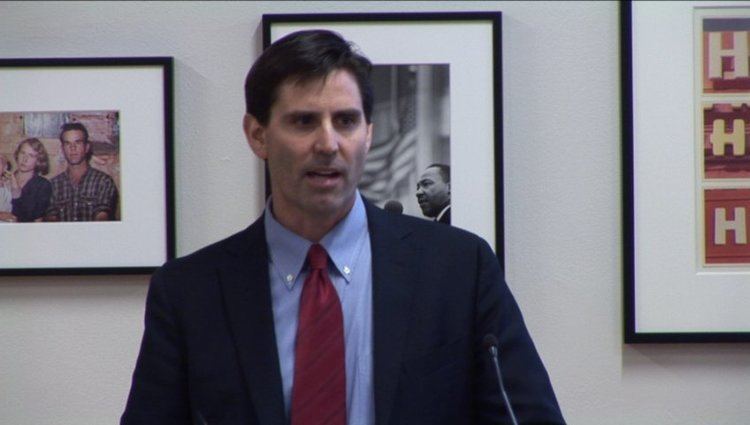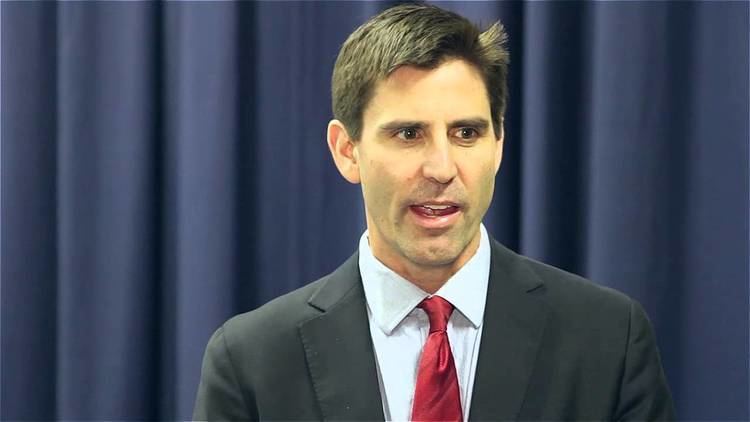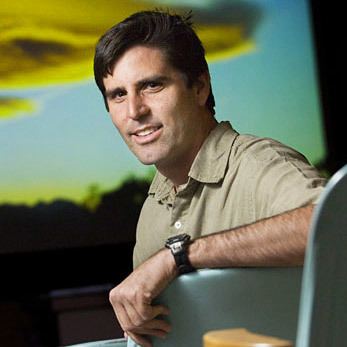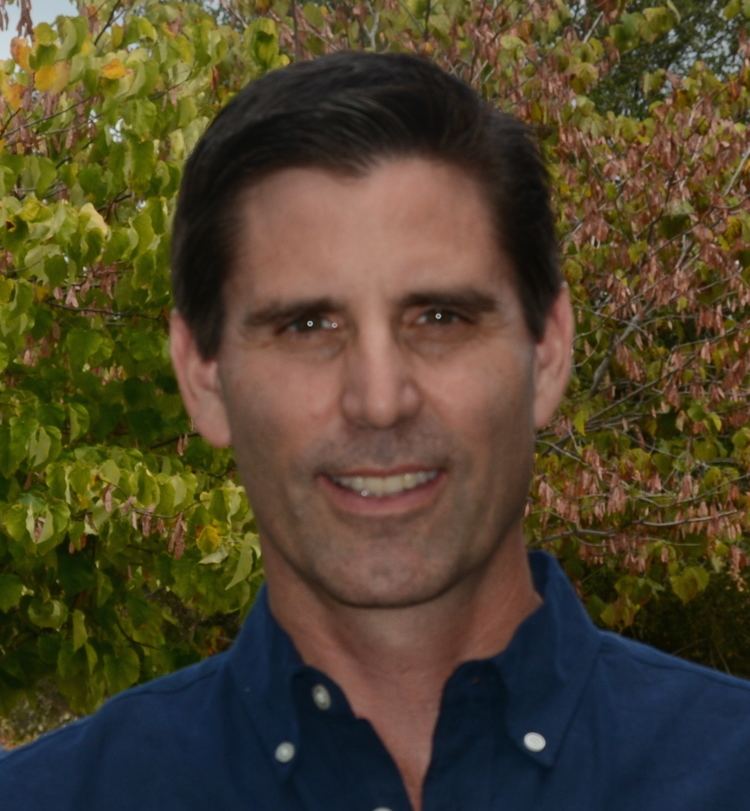Name Mark Jacobson Role Professor | ||
 | ||
Institutions University of California, Los AngelesStanford University Thesis Developing, coupling, and applying a gas, aerosol, transport, and radiation model to study urban and regional air pollution (1994) Books Fundamentals of atmosphe, Air Pollution and Glob, Atmospheric pollution, Fundamentals Atmospheric Model 2ed | ||
Economics of climate change mark z jacobson the new school
Mark Zachary Jacobson (born 1965) is a professor of civil and environmental engineering at Stanford University and director of its Atmosphere/Energy Program. Jacobson develops computer models to study the effects of different energy technologies and their emissions on air pollution, weather, and climate. He has performed influential research on the role of black carbon and other aerosol chemical components on global and regional climate and is regarded as a leading aerosol climate modeler. In a 2001 highly cited paper in the Journal Nature, Jacobson posited that black carbon, which is emitted during fossil fuel, biofuel, and biomass burning, may be the second leading cause of global warming after carbon dioxide in terms of direct radiative forcing. For this and related work, he received the 2005 American Meteorological Society Henry G. Houghton Award for “significant contributions to modeling aerosol chemistry and to understanding the role of soot and other carbon particles on climate” and a 2013 American Geophysical Union Ascent Award for “his dominating role in the development of models to identify the role of black carbon in climate change.”
Contents
- Economics of climate change mark z jacobson the new school
- Mark z jacobson presented by the columbus community bill of rights columbus ohio
- Education
- Current positions
- Research
- Opinion on energy systems
- Books
- Selected articles
- Awards
- References

Jacobson has also developed roadmaps to transition the world as a whole, all 50 U.S. states , and 139 countries to 100% clean, renewable wind, water, and solar (WWS) energy for all energy purposes. According to Jacobson, a speedy transition to clean, renewable energy is required to reduce the potential acceleration of global warming, including the disappearance of the Arctic Sea ice. His proposed transition will also eliminate millions of premature deaths worldwide each year caused by air pollution and reduce disruption associated with fossil fuel shortages. His roadmaps have served as a scientific basis for over 40 cites and over 100 international companies to commit to transitioning to 100% clean, renewable energy as well as for several proposed state and federal resolutions and laws to do the same. Jacobson co-founded the non-profit Solutions Project in 2011 along with Marco Krapels, Mark Ruffalo, and Josh Fox. The Solutions Project combines science, business, and culture to educate the public about the potential to transition to 100% clean, renewable energy and to help accelerate the transition.

Mark z jacobson presented by the columbus community bill of rights columbus ohio
Education

Current positions

Research

Jacobson began computer model development in 1990, when he started to build algorithms for what is now called GATOR-GCMOM (Gas, Aerosol, Transport, Radiation, General Circulation, Mesoscale, and Ocean Model). This model simulates air pollution, weather, and climate from the local to global scale. Zhang (2008, pp. 2901, 2902) calls Jacobson's model "the first fully-coupled online model in the history that accounts for all major feedbacks among major atmospheric processes based on first principles."
Several of the individual computer code solvers Jacobson developed for GATOR-GCMOM include the gas and aqueous chemistry ordinary differential equations solvers SMVGEAR and SMVGEAR II, the aerosol and cloud coagulation solver COAGSOLV, the gas-aerosol chemical equilibrium solvers EQUISOLV and EQUISOLV II, the ocean chemical equilibrium solver EQUISOLV O, the ocean non-equilibrium predictor of dissolution scheme OPD, the analytical predictor of condensation scheme APC for solving condensation of gases onto size-resolved aerosol particles, the analytical predictor of dissolution scheme APD for solving dissolution of gases into size-resolved liquid particles, and the predictor of non-equilibriumgrowth scheme PNG for solving dissolution into liquid aerosols among multiple competing gases simultaneously. He has also developed schemes for size-resolved cloud drop breakup; many other size- and composition-resolved cloud microphysics processes; the 3-D evolution of size- and composition-resolved clouds; ultraviolet absorption coefficients of brown carbon aerosol particles; infrared absorption coefficients of greenhouse gases; absorption by black carbon, brown carbon, and soil dust within and between cloud drops; explicit 3-D atmospheric chemistry with thousands of gas and aqueous reactions; soil, vegetation, urban, snow, ocean, and sea ice surface processes; sub-grid treatment of aircraft exhaust and contrails from all commercial flights worldwide; and global-through-local model nesting. The GATOR-GCMOM model has incorporated these processes and has evolved over several decades.
One of the most important results Jacobson has found with GATOR-GCMOM is that black carbon in soot emissions from carbonaceous fossil fuel, biofuel, and biomass burning sources may be the second-leading cause of global warming after carbon dioxide in terms of direct radiative forcing. This result was obtained after he found that soot aerosol particles, which are relatively pure black carbon plus organic matter when they are emitted, age over time in the atmosphere and become internally mixed with other chemicals that condense on them or collide with and stick to them. This internal mixing increases the size of the soot-containing particles, exposing the particles to more solar radiation. The additional solar radiation bounces around inside the particles, resulting in more collisions of the rays with the black carbon itself, which absorbs all wavelengths of solar radiation, thereby appearing black. The result of internal mixing is that internally mixed soot, in the global average, may absorb twice as much radiation as pure soot. The absorbed solar radiation gets converted to heat, which is re-emitted to the atmosphere. Thus, while greenhouse gases warms the lower atmosphere by trapping thermal-infrared heat radiation emitted by the surface of the Earth, black carbon warms the atmosphere by absorbing sunlight and re-emitting that energy to the air around it as thermal-infrared heat. Jacobson also found that soot from diesel engines, coal-fired power plants and burning wood is a "major cause of the rapid melting of the Arctic's sea ice." Jacobson's conclusion that black carbon may be the second leading cause of global warming in terms of radiative forcing was affirmed in the comprehensive review of Bond et al. (2013).
Jacobson further found that soot itself, which causes respiratory illness, heart disease and asthma, from fossil fuel and biofuel sources alone, may cause at least 1.5 million premature deaths each year, mostly in the developing world where wood and animal dung are used for cooking.from fossil fuel and biofuel sources.
Because of the short atmospheric lifetime of black carbon and the soot that contains it, relative to carbon dioxide, Jacobson concluded in a 2002 paper that while black carbon is the second-leading cause of warming, controlling fossil fuel black carbon plus organic matter (soot) may be the fastest method of slowing global warming and that controlling soot "will not only slow global warming but also improve human health." However, he cautioned that controlling carbon dioxide, the leading cause of global warming, was imperative for stopping warming.
Jacobson has conducted several studies about transitioning to 100% clean, renewable energy systems, including the grid integration of renewable energy. He has concluded that wind, water, and solar (WWS) power can be scaled up in cost-effective ways to fulfill world energy demands in all energy sectors, freeing human society from dependence on and impacts of fossil fuels. In 2009 Jacobson and Mark A. Delucchi published "A Path to Sustainable Energy" in Scientific American. The article addressed several issues related to transitioning to 100% WWS, such as the energy required in a 100% electric world, the worldwide spatial footprint of wind farms, the availability of scarce materials needed for manufacture of new systems, the ability to produce reliable energy on demand, and the average cost of WWS energy per kilowatt hour. A more detailed and updated technical analysis was published as a two-part article in the journal Energy Policy in 2010. "Providing all global energy with wind, water, and solar power". The articles analyze the feasibility of providing worldwide energy for all purposes (electric power, transportation, heating/cooling, industry, etc.) from wind, water, and sunlight (WWS). In Part I, Jacobson and Delucchi discuss WWS energy system characteristics, current and future energy demand, availability of WWS resources, numbers of WWS devices, and land and material requirements. They estimated that 3,800,000 5-MW wind turbines, 49,000 300-MW concentrated solar plants, 40,000 300-MW solar PV power plants, 1.7 billion 3-kW rooftop PV systems, 5350 100-MW geothermal power plants, and 270 new 1300-MW hydroelectric power plants would be needed. They also found that such a WWS infrastructure reduces world power demand by 30% due to the efficiency of electricity over combustion and some additional end-use energy efficiency measures and requires 0.41% and 0.59% more of the world's land for footprint and spacing, respectively.
In Part II, Jacobson and Delucchi addressed variability, economics, and policy of WWS energy. Jacobson and Delucchi suggest producing all new energy with WWS by 2030 and replacing the pre-existing energy by 2050. Barriers to the plan were stated to be primarily social and political, not technological or economic. The energy cost in a WWS world should be similar to today's costs.
More recently, Jacobson and his colleagues developed roadmaps for transitioning to 100% clean, renewable energy produced by WWS for New York, California and Washington states, by 2050, with 80% by 2030. In 2015 he was the lead author of two connected studies in Energy and Environmental Science and Proceedings of the National Academy of Sciences, that examined the feasibility of transitioning the United States to a 100% energy system, powered exclusively by wind, water and sunlight with also solving the grid reliability problem with high shares of intermittent sources. In 2016 the editorial board of PNAS selected the grid integration study of Jacobson and his co-workers as best paper in the category "Applied Biological, Agricultural, and Environmental Sciences" and awarded him a Cozzarelli Prize.
In June 2017, an article published in the PNAS critiqued Jacobson’s grid integration findings for not including nuclear power or fossil fuels with carbon capture and for making modeling errors. PNAS simultaneously published a response by Jacobson and co-authors, concluding, "The premise and all error claims by Clack et al. about Jacobson et al. are demonstrably false. We reaffirm Jacobson et al.'s conclusions." Jacobson also authored a line-by-line response and several editorial posts that pointed to additional problems with the critique. He has further noted that there are 24 other independent peer-reviewed papers that had found grid stability with 100% or near-100% renewable energy without nuclear power or fossil fuels with carbon capture, supporting the results of his paper.
In August 2017, Jacobson and colleagues published a new paper in the inaugural edition of the Energy journal, Joule, laying out 100% clean, renewable WWS energy roadmaps for 139 countries of the world by 2050, with 80% by 2030. The paper concluded that, if implemented, the 139-country roadmaps could eliminate most all of the 4-7 million deaths each year today due to air pollution and 3.5 million per year projected to occur in 2050, avoid 1.5 degree Celsius global warming (the most ambitious goal of the 2015 Paris Agreement), provide ~24 million more net long-term, full-time jobs than lost, stabilize energy prices while reducing the social cost (direct plus health plus climate cost) of energy by ~75%, reduce terrorism and catastrophic risk associated with large, centralized energy plants by distributing energy more, and improve access to power to ~4 billion people in energy poverty, including ~1.2 billion with no access to energy and the rest who must collect their own energy.
Jacobson also co-founded the non-profit The Solutions Project along with Marco Krapels, Mark Ruffalo, and Josh Fox. This organization helps to educate the public about science-based 100% clean, renewable energy transition roadmaps and facility a transition to a 100% clean, renewable world. The Solutions Project has been instrumental in inspiring other nonprofits and community builders to help in the transition to 100% clean, renewable energy.
Opinion on energy systems
Jacobson states that if the United States wants to reduce global warming, air pollution and energy instability, it should invest only in the best energy options, and that nuclear power is not one of them. Jacobson's analyses state that "nuclear power results in up to 25 times more carbon emissions per unit energy than wind energy, when delays between planning and operation and emissions from reactor construction, uranium refining and transport are considered". These calculations are based on a 2009 paper of Jacobson's that was published in Energy and Environmental Science, which report nuclear lifecycle emissions to be 9-70 g/kWh, and the lifecycle plus opportunity-cost plus catastrophic risk emissions to be 68–180.1 g/kWh. Opportunity-cost emissions are the emissions from the background fossil fuel grid that arise due to the long time lag between planning and operation of a nuclear plant relative to a wind or solar farm. These emissions had never been considered before but are relevant for studies comparing two different energy technologies. The lifecycle emission figures from Jacobson are in the range of the consensus determined by the 2014 Intergovernmental Panel on Climate Change, 4-110 g/kWh.
Jacobson has also studied carbon capture and sequestration (CCS) technology, concluding that, whereas it can reduce carbon dioxide emissions from coal-fired power plants, other pollutants will increase particularly as the CCS equipment does not address them and requires 25% more energy, thus coal, to run. Further, because mining and transport emissions are not eliminated but in fact increase 25%, carbon dioxide emissions are still more than 50 times those of wind power per unit energy produced. Thus, CCS will increase air pollution, extend all the other deleterious effects of coal mining, transport and processing, and reduce carbon dioxide only modestly, thus represents an opportunity cost over clean, renewable energy options.
Jacobson's exclusion of nuclear and fossil fuels with CCS has support. A 2016 study by Cooper, who compared the 100% WWS roadmaps of Jacobson with deep decarbonization proposals that included nuclear power and fossil fuels with carbon capture agreed that the 100% WWS pathway was the least cost and concluded, “Neither fossil fuels with CCS or nuclear power enters the least-cost, low-carbon portfolio.” This result is consistent with that of even strong nuclear advocates, who acknowledge “…there is virtually no history of nuclear construction under the economic and institutional circumstances that prevail throughout much of Europe and the United States." Such results contrast with a 2015 assessment by nuclear power advocates of the various strategies proposed to get to a global zero or low carbon economy by circa 2040 that claimed that, because Jacobson's plans didn't include nuclear, the 100 percent renewable world would be the most costly and difficult to achieve.
